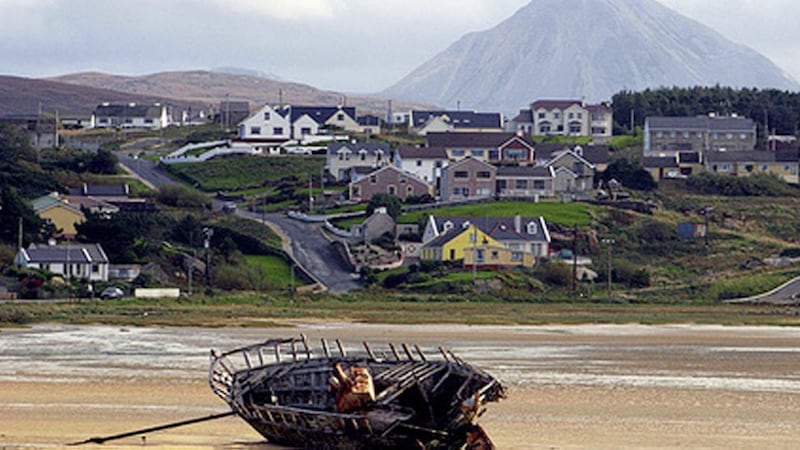A MAJOR repair plan is being put together for Mount Errigal in Co Donegal amid concerns over the erosion caused by thousands of people who climb the iconic mountain each year.
Standing sentry over the Poison Glen and Dunlewey, Errigal is instantly recognisable from its conical shape while the sun glinting off quartzite that stream from its summit often gives the mountain a mysterious pink and white glow.
Voted Ireland's most iconic mountain by "Walking and Hiking Ireland" in 2009, the majestic mountain is often seen as the physical embodiment of west Donegal.
For many, Errigal provides an opportunity to climb a "real" mountain. On reaching the summit, the effort is instantly rewarded with spectacular view and north west Ulster its popularity and accessibility has led to major problems in the form of erosion.
While complete figures are not yet available, it is estimated that between 25,000 and 30,000 people ascended the mountain in the last year alone, with paths worn from the bottom of the mountain and gullies created at the top.
Led by Donegal County Council, an Errigal stakeholders' group has now lodged planning permission for a range of works designed to repair the damage and sustain the mountain into the future.
Working through the international Ascent project - created in 2016 to protect and manage popular upland sites and natural areas - the group hopes to create a proper path from the bottom of the mountain to the summit.
Paul Roarty of Dunlewey Development Committee said people living around Errigal had been aware of the damage for many years.
"People often think the damage is only around the bottom of the mountain where the path is turned to mud but it extends all the way to the top," he said.
"The problem with Errigal is that it is so accessible. On other mountains, you have to walk a long distance before you can climb a mountain, but on Errigal, you can park your car at the carpark and immediately start up the mountain."
Mr Roarty stressed the group was not trying to prevent anyone from climbing Errigal, with the scheme designed to create a balance between protecting the mountain and helping those who wish to visit it.
"We'd hope that, when it's complete, the path would be used by the majority of people going up the mountain and that way the damage could be prevented for years to come."
There are also plans to repair the damage caused by the creation of gullies at the top of Errigal.








